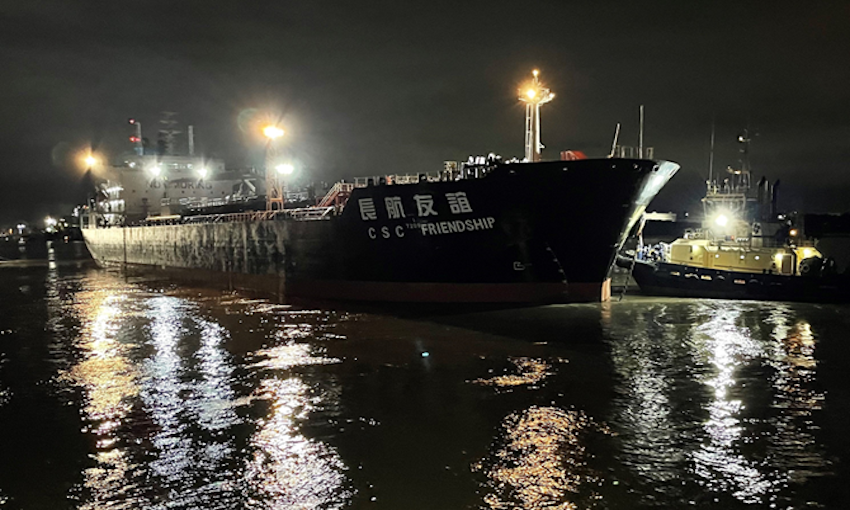SEVERE flooding in Queensland early this year disrupted operations at Port of Brisbane and caused a vessel to break its lines.
Several days of intense rainfall damaged properties and washed debris into the Brisbane River, causing a build-up of sunken objects and siltation at the port.
High water flows caused Hong Kong-flagged oil tanker MT CSC Friendship to break away from the Ampol Products wharf on the Brisbane River at Lytton and run aground.
The regional harbour master suspended the movement of vessels at the port as water velocity and debris had hampered navigation.
Port of Brisbane’s then-interim chief executive officer Neil Stephens (now CEO) said the port was working closely with the harbour master to deploy survey vessels to determine safe depth of the navigation areas and possible debris obstruction.
“The speed of the river current and turbidity at the moment is proving challenging in this regard,” Mr Stephens said.
“[Maritime Safety Queensland] and the state government is co-ordinating multiple salvage teams to remove any debris, and PBPL will deploy its dredge and barge fleet to assist focussing on the port precincts.”
On 3 March, the regional harbour master authorised the first two vessel movements since operations were suspended. Mr Stephens said one tanker was able to depart the Ampol crude berth and another brought in following “extensive planning and simulation”.
He said the harbour master prioritised the vessel exchange to maintain fuel supplies in the region. Movements were carried out under extreme caution.
“It cannot be understated how complex this operation was, nor how important,” Mr Stephens said in an update.
“It is a credit to all stakeholders who took part: the RHM and his Maritime Safety Queensland staff, Svitzer tugs, Ampol, the pilots and the ships’ agents and masters,” he said.
Port of Brisbane later confirmed 33 ships were at anchorage or off the coast while operations were suspended.
Port of Brisbane returned to near-full operation 12 days after shipping was halted, with some limitations still in place for larger vessels and those venturing upstream from the port.
The port carried out more than 100 surveys between 28 February and 15 March, equating to around 14.5 million square kilometres, according to Port of Brisbane. They uncovered 204 objects in navigable channels and berth pockets.
Port of Brisbane thanked its operational teams and stakeholders for their response to the situation and their efforts in the days and weeks that followed.

